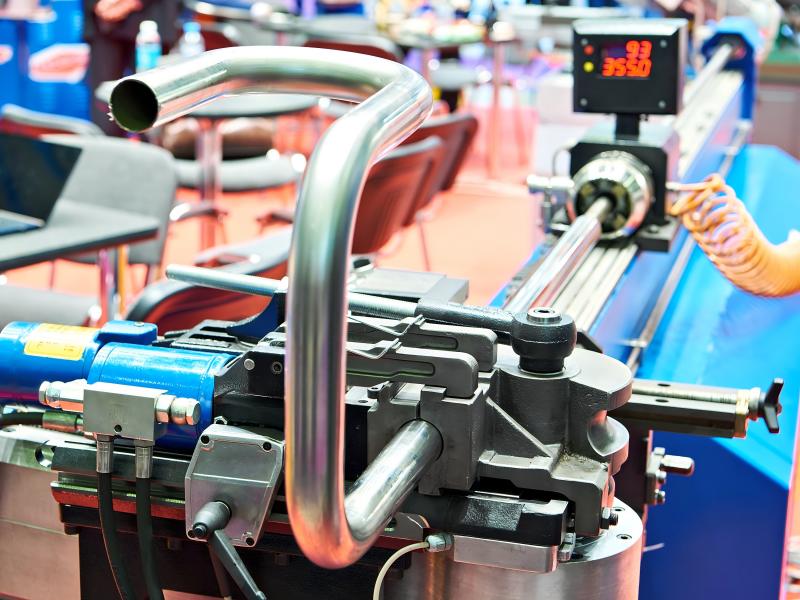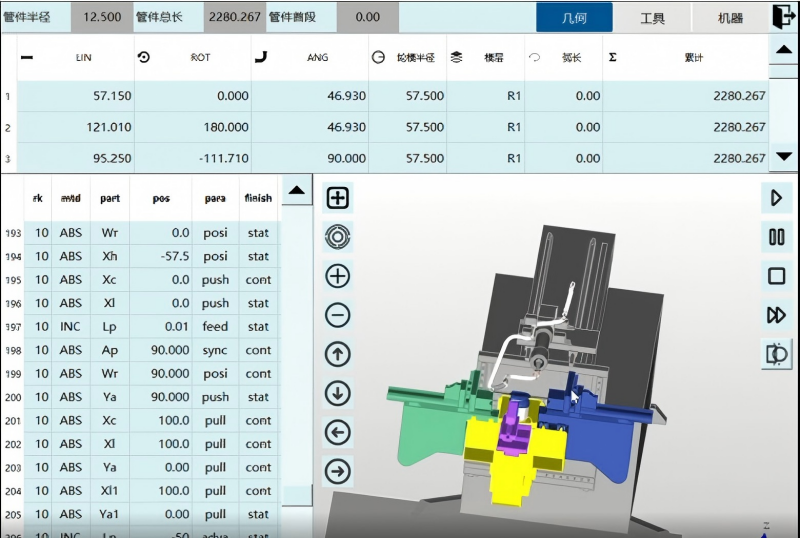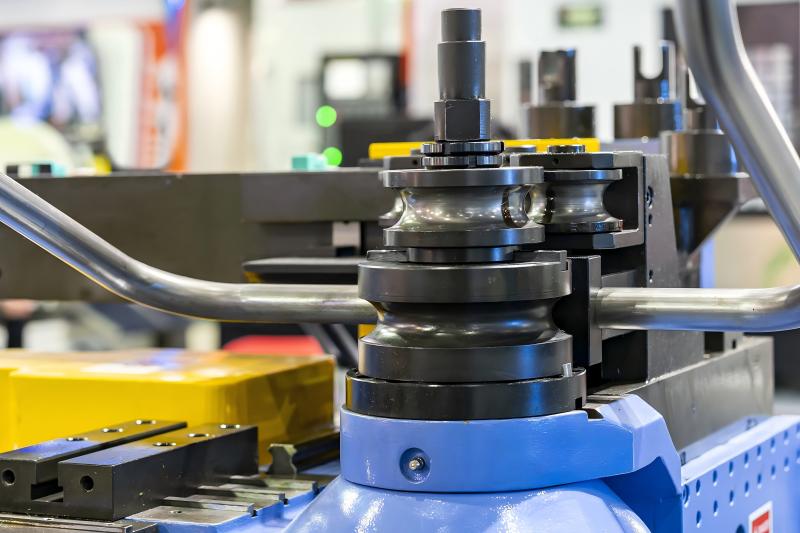مركز التوثيق
أدلة وإرشادات تقنية شاملة لمساعدتك على إتقان آلات HARSLE وتحسين كفاءة تشغيل المعادن لديك
ثني الأنابيب المستوردة مقابل المحلية: أيهما أفضل؟
Imported vs Local Tube Benders have become a major consideration for many manufacturers deciding on their next equipment investment. Each option offers distinct strengths and limitations depending on production demands, budget range, and after-sales expectations. In this article, I’ll guide you through the essential differences between imported and local tube benders, highlight their main pros and cons, and help you determine which type best suits your business goals.
Understanding the Difference Between Imported and Local Tube Benders
Before comparing their performance, it’s important to understand what sets imported and local tube benders apart. Imported tube benders are machines manufactured overseas—often from established brands in Europe or Asia—that are known for advanced technology and high precision. Local tube benders, on the other hand, are produced domestically, offering easier communication, faster delivery, and potentially lower maintenance costs.
Key Factors That Influence Your Choice
When choosing between imported vs local tube benders, several aspects should be considered:
- Price and Value: Imported machines may come with a higher price tag but often deliver longer service life and higher automation levels.
- Technology: Imported benders usually integrate advanced CNC systems, servo motors, and automatic positioning. Local machines may focus on cost efficiency with simpler control options.
- After-Sales Service: Local suppliers typically provide faster on-site support, while imported machines may require longer response times for parts and service.
- Customization: Local manufacturers often allow flexible design customization based on customer needs, while imported machines follow standard global configurations.
مزايا Imported Tube Benders
1. Superior Precision and Automation

Imported tube benders are widely recognized for their advanced servo-driven systems, precise control software, and reliable bending repeatability. This makes them ideal for industries requiring consistent accuracy, such as automotive, aerospace, and HVAC manufacturing.
2. Long-Term Reliability
International brands often adhere to stricter quality control standards and use high-grade materials. As a result, imported machines generally have a longer lifespan and lower risk of mechanical failure over time.
3. Advanced Technology Integration
Most imported CNC tube benders support digital angle correction, automatic spring-back compensation, and even 3D simulation software. These functions reduce human error and improve production efficiency, especially in complex multi-radius bending projects.

Advantages of Local Tube Benders
1. Cost Efficiency and Short Lead Time

Local tube benders typically cost less upfront and can be delivered faster. This is especially beneficial for small and medium-sized fabrication shops that need quick production starts or have budget constraints.
2. Easier Maintenance and Technical Support

Because local suppliers are geographically closer, maintenance, training, and spare parts delivery are more efficient. Technicians can respond faster to breakdowns, reducing machine downtime and lost production.
3. Custom Design and Flexibility
Local manufacturers are often open to custom adjustments—such as adding extra tooling, adapting control interfaces, or modifying bending capacities—to suit unique production requirements.
Drawbacks to Consider
Imported Tube Benders
- Higher purchase and shipping costs
- Longer lead times for spare parts and service
- Possible communication barriers with foreign technical teams
Local Tube Benders
- Limited access to high-end automation features
- Potentially lower accuracy on complex or thin-wall tubing
- Less global brand recognition and resale value
How to Choose the Right Tube Bender for Your Business

To make the right decision, assess your production priorities:
- If you value automation, accuracy, and long-term reliability, imported tube benders may be the better investment.
- If you need cost efficiency, faster delivery, and flexible support, a local tube bender might be the smarter choice.
Also consider your industry standards. For instance, CNC imported tube benders are preferred in aerospace or automotive manufacturing, while NC local tube benders often perform well in construction or furniture fabrication.
Comparison Table: Imported vs Local Tube Benders
| فئة | Imported Tube Benders | Local Tube Benders |
|---|---|---|
| سعر | Higher initial investment due to shipping, import tax, and advanced components | More affordable with lower upfront cost |
| Precision & Technology | Excellent accuracy, CNC control, servo systems, and 3D simulation | Sufficient for standard jobs, but may lack advanced automation |
| متانة | Built with premium materials and strict quality control | Adequate for medium-duty use; may require more frequent maintenance |
| Delivery Time | Longer lead time (8–12 weeks) due to international shipping | Shorter lead time (2–4 weeks), faster delivery within the country |
| Maintenance & Support | After-sales service may take longer; parts shipped from abroad | Quick technical response, local spare parts easily available |
| التخصيص | Limited flexibility; standard global configurations | High flexibility; can be customized to specific production needs |
| Resale Value | Higher resale value due to brand reputation | Lower resale value, but easier to repair or retrofit locally |
| الأفضل لـ | Large-scale production, precision industries (automotive, aerospace) | Small to mid-size workshops, cost-sensitive operations |
الأسئلة الشائعة
Are imported tube benders more durable than local ones?
Generally yes, imported machines often feature higher-quality components and tighter tolerance standards, which contribute to longer durability and stability.
Can local tube benders achieve the same accuracy as imported models?
For standard bending tasks, local benders perform well. However, for precision-critical applications requiring micron-level accuracy, imported models have an advantage.
What is the average delivery time for imported vs local tube benders?
Local benders can often be delivered within 2–4 weeks, while imported machines may take 8–12 weeks due to overseas shipping and customs processes.
How can I ensure proper maintenance for an imported tube bender?
Always follow the manufacturer’s maintenance schedule, keep the bending dies clean, and use genuine replacement parts. Some brands offer remote diagnostics and software updates to support users globally.
خاتمة
Choosing between imported vs local tube benders ultimately depends on your operational goals, budget, and service expectations. Imported tube benders deliver unmatched precision and advanced automation, while local machines offer faster support and more flexible customization. Both can be excellent investments when matched correctly with your production needs.
If you’re still unsure which option suits your business best, feel free to contact the HARSLE technical team for professional guidance. We’ll help you select the ideal bending solution that balances performance, cost, and reliability for your metal fabrication projects.













